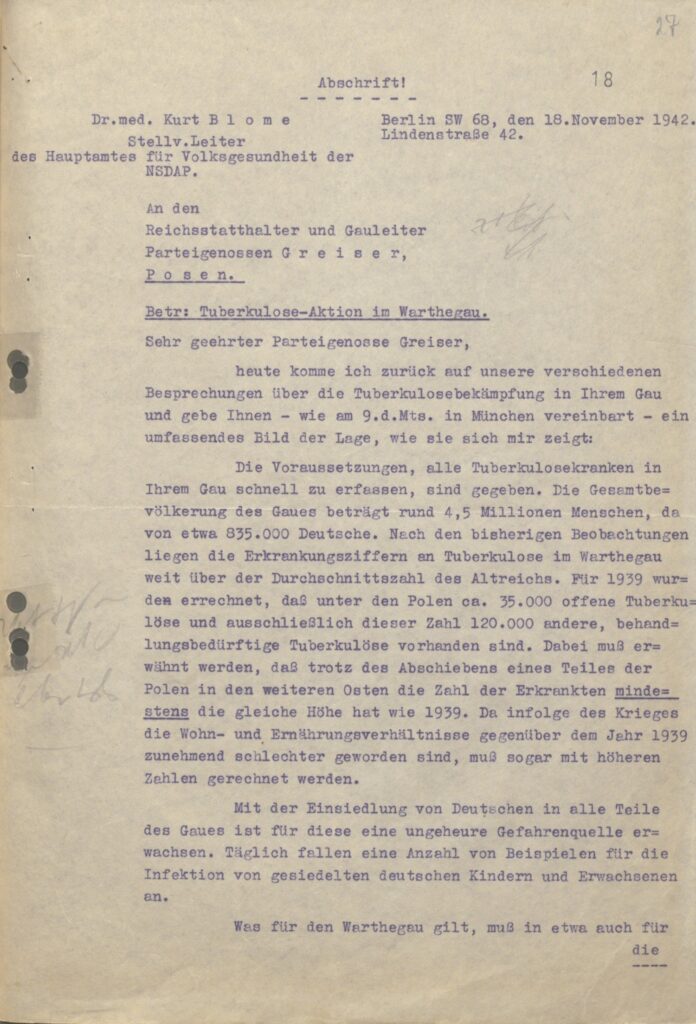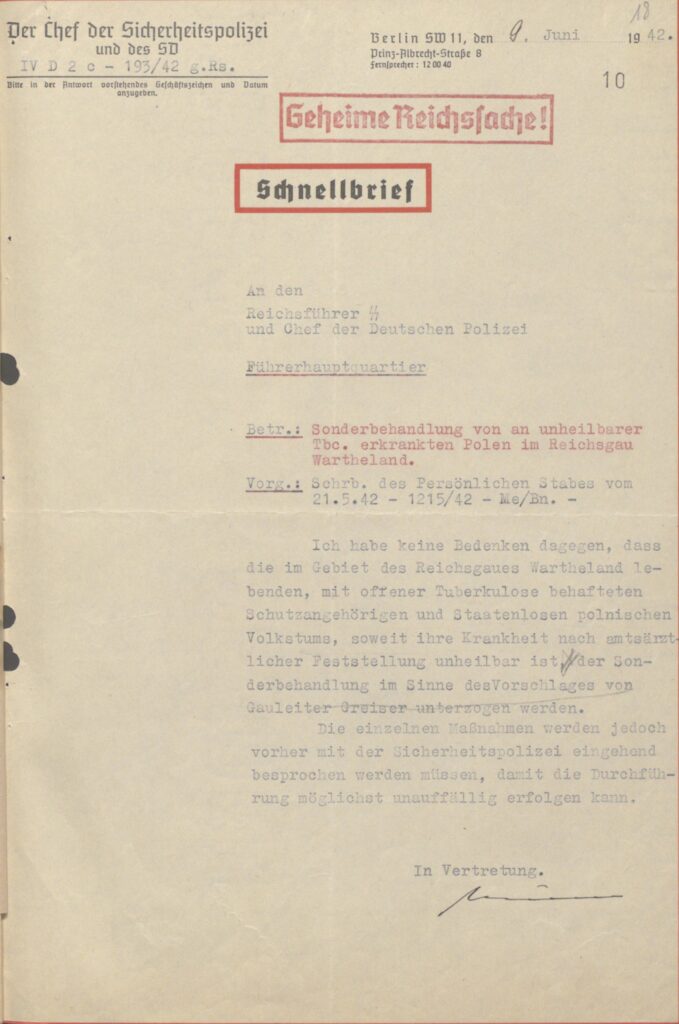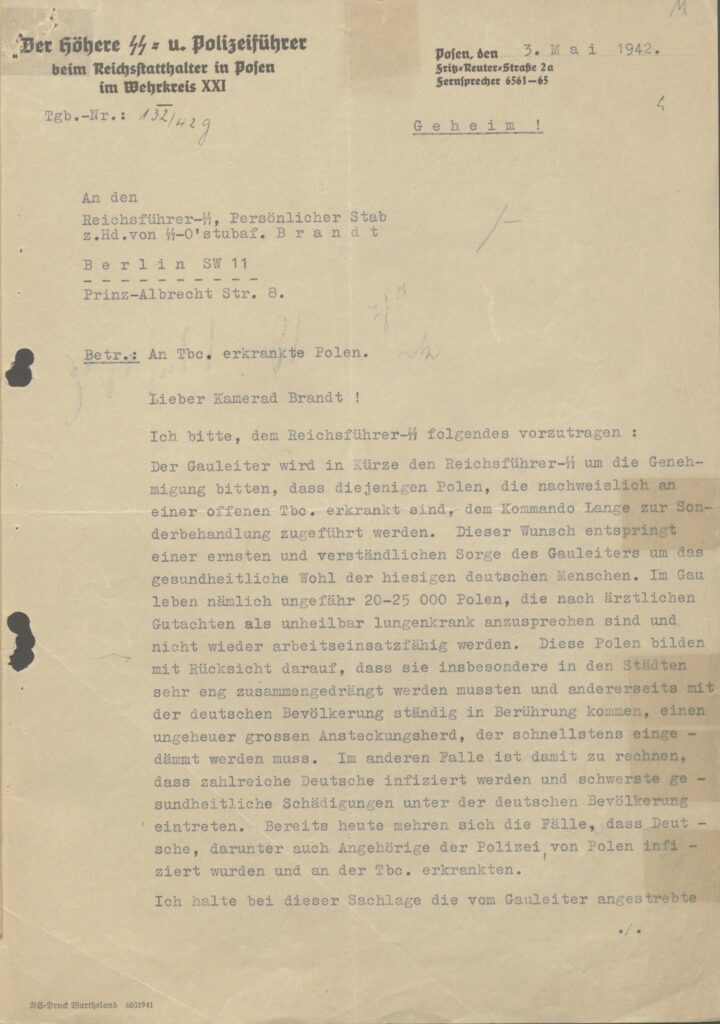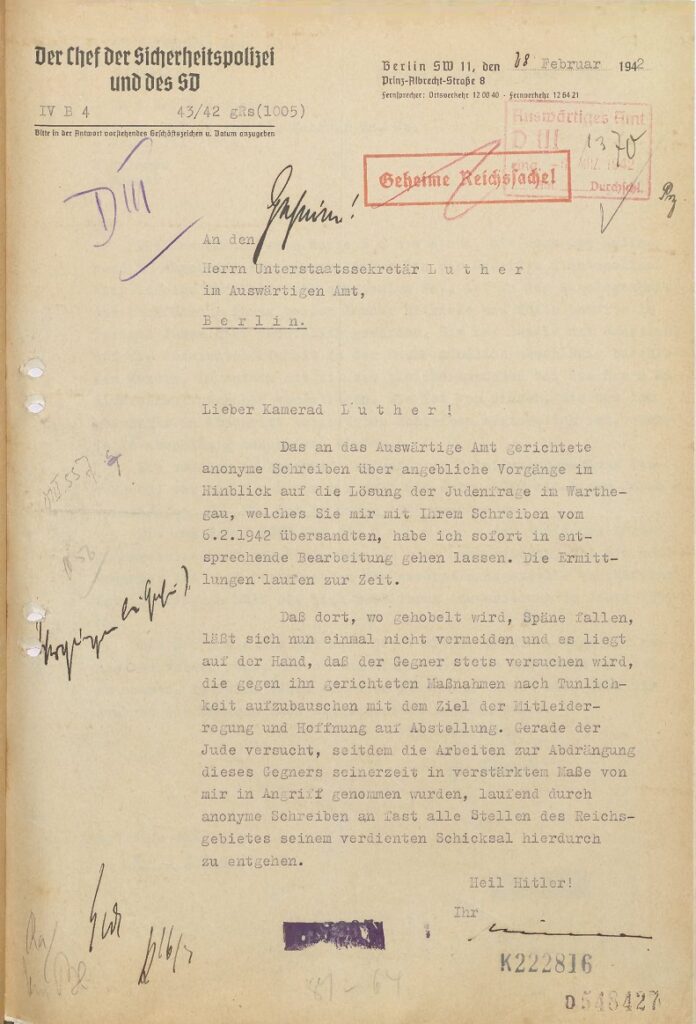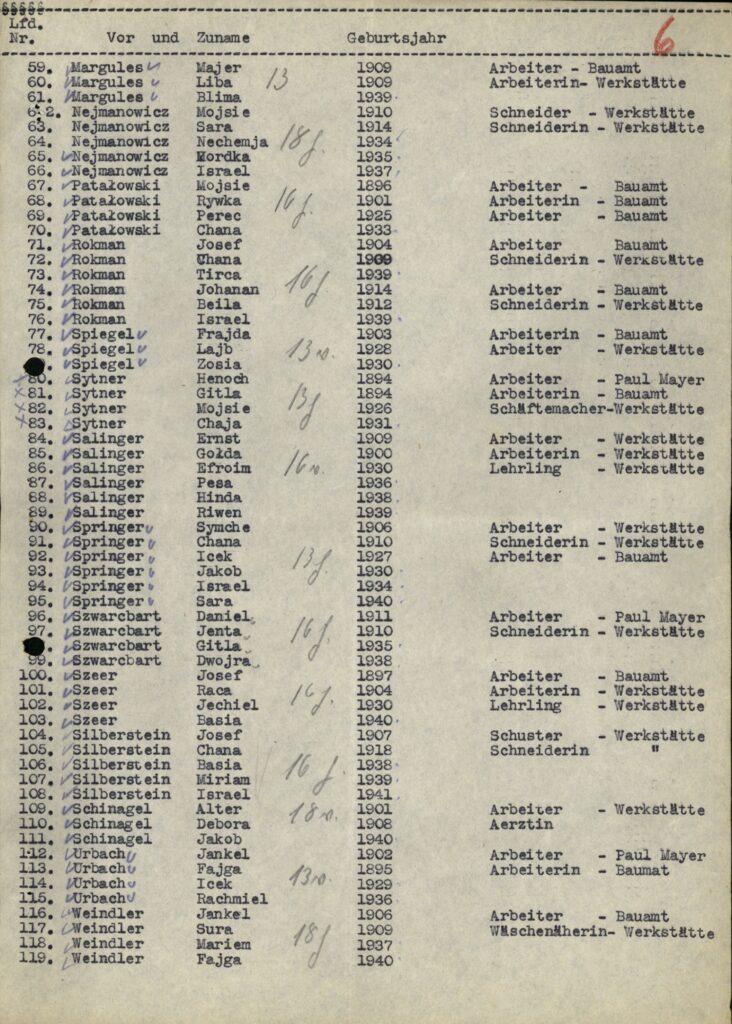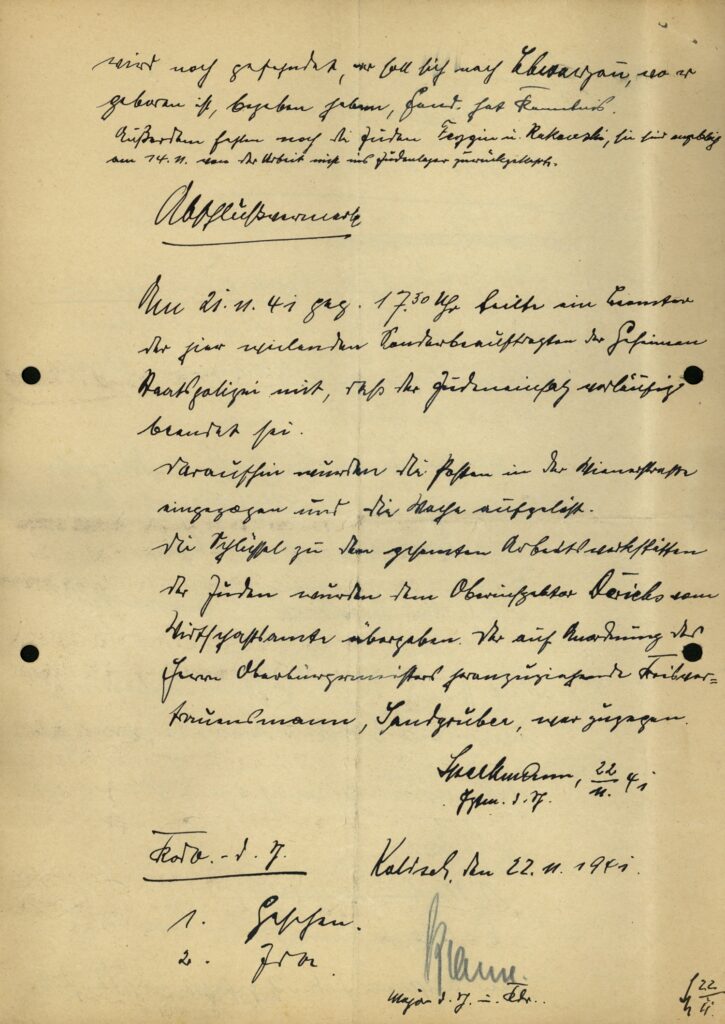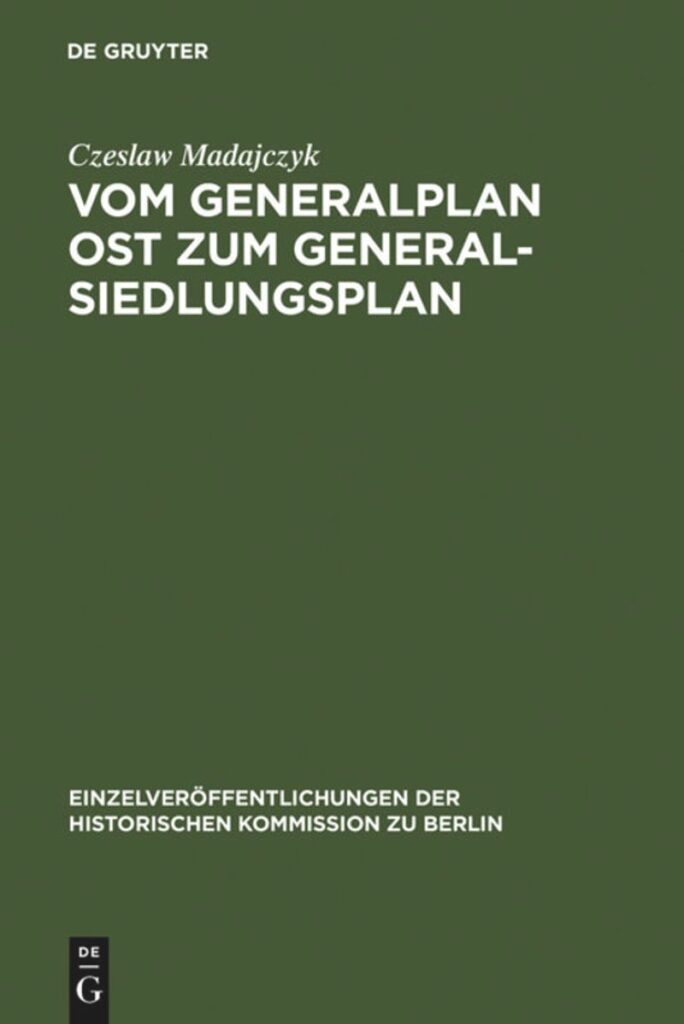1942-11-18 Letter from Kurt Blome to Arthur Greiser: “approximately 35,000 incurable and contagious Poles would be ‘specially treated’….one day even the relatives of the patients will notice that ‘something is not right here,’ even with the best efforts at secrecy.”
While the Nazi authorities in the Warthegau were already planning the killing of Polish individuals incurably afflicted with tuberculosis, concerns were raised by the Main Office for Public Health of the NSDAP. In a letter dated 18 November 1942 to Arthur Greiser, the Reich Governor of the Wartheland, Kurt Blume detailed the plan of the Warthegau authorities where “approximately 35,000 incurable and contagious Poles would be given special treatment.” He also noted that Greiser “obtained approval for the special treatment from the appropriate authorities,” (e.g. the Security Police and Reichsführer SS) but stressed the need to ensure “explicitly that the Führer truly agrees with such a solution.” Blume pointed out that Hitler “already halted the action in the asylums some time ago, and currently does not consider ‘special treatment’ of the hopeless patients politically expedient or acceptable.” Overall, Blume expressed that “secrecy is simply impossible… one day even the relatives of the patients will notice that ‘something is not right here,’ even with the best efforts at secrecy.”
